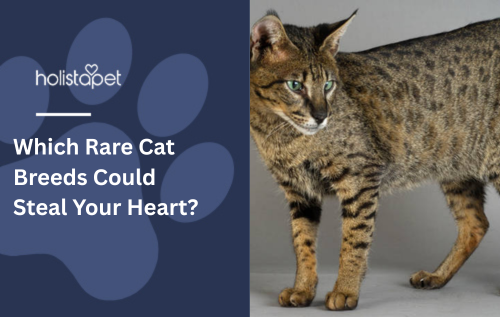When most people think of cats, they imagine common breeds like the Persian, Siamese, or Maine Coon. But there’s an entire world of rare cat breeds that are unique in appearance, personality, and history. Whether you’re a passionate feline enthusiast or just curious about unusual pets, learning about these exotic breeds can open your eyes to the incredible diversity of the cat world.
In this article, we’ll explore what makes these cats rare, highlight some stunning examples, and give you tips on caring for them.
 Why Are Some Cat Breeds Considered Rare?
Why Are Some Cat Breeds Considered Rare?
A cat breed may be considered rare due to its limited breeding population, geographic restrictions, or unusual physical traits. Some breeds are only found in specific regions, while others require careful breeding to maintain their distinctive characteristics.
Examples of Rare Cat Breeds You Might Love
1. Khao Manee
Known as the “Diamond Eye Cat” from Thailand, the Khao Manee often has odd-colored eyes—one blue and one gold. These cats were once reserved for royalty.
 2. Peterbald
2. Peterbald
Originating in Russia, this elegant breed has a slender body and comes in various coat types, from completely hairless to short velvety fur.
 3. Serengeti
3. Serengeti
Bred to resemble a wild African Serval, the Serengeti is a lively, athletic cat with striking spots.
 4. Kurilian Bobtail
4. Kurilian Bobtail
Native to Russia and Japan, this breed has a distinctive pom-pom tail and is known for being intelligent and gentle.
 5. Burmilla
5. Burmilla
With sparkling silver coats and expressive eyes, the Burmilla is both rare and affectionate.
Caring for Rare Cat Breeds
Rare cats often require specific care:
-
Nutrition: Premium, high-protein diets to maintain coat quality and health.
-
Health Monitoring: Some rare breeds may have unique genetic concerns—regular vet check-ups are essential.
-
Enrichment: Active breeds need toys, climbing trees, and interactive play to stay happy.
Frequently Asked Questions
1. Are rare cat breeds more expensive?
Yes. Due to their scarcity and specialized breeding, rare cats often cost more than common breeds. Prices can range from hundreds to several thousand dollars.
2. Can I adopt a rare cat instead of buying one?
While adoption is possible, it’s less common. Occasionally, rare cats end up in shelters or breed-specific rescues.
3. Do rare cats have more health problems?
Not always. However, certain breeds have genetic predispositions, so research and a responsible breeder are key.
4. Are rare cat breeds good with children?
Many are, but it depends on the breed’s temperament. Always introduce any cat slowly and monitor early interactions with kids.
Final Thoughts
Owning a rare cat breed can be incredibly rewarding, offering a unique companion that turns heads and melts hearts. However, it’s important to remember that rarity comes with responsibility—these cats often need specialized care and attention. Before committing, research thoroughly and choose a reputable breeder or rescue organization.
Helpful Notes
-
Always check local pet ownership laws—some breeds may be restricted.
-
Avoid impulse buying; meet the cat first to ensure compatibility.
-
Consider pet insurance for peace of mind, especially for rare breeds with higher medical risks.



 CBD Oil for Cats - Fast Acting
CBD Oil for Cats - Fast Acting
 CBD Cat Treats - Easy Dose
CBD Cat Treats - Easy Dose
 CBD Calming Chews for Cats - Highly Rated
CBD Calming Chews for Cats - Highly Rated
 CBG Oil for Dogs and Cats - Loved by Thousands
CBG Oil for Dogs and Cats - Loved by Thousands





Leave a comment
This site is protected by hCaptcha and the hCaptcha Privacy Policy and Terms of Service apply.